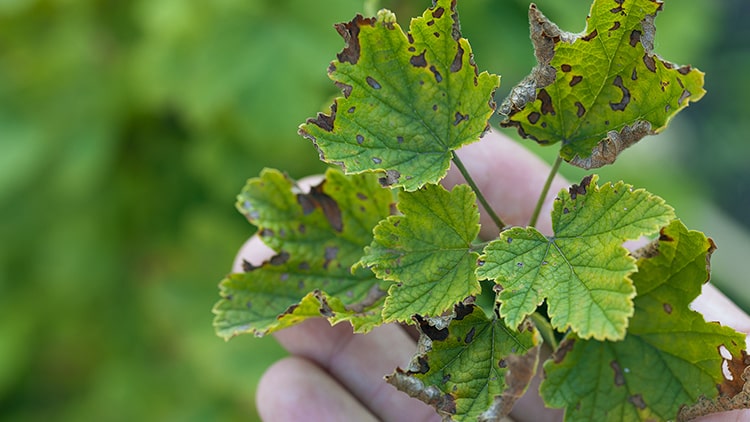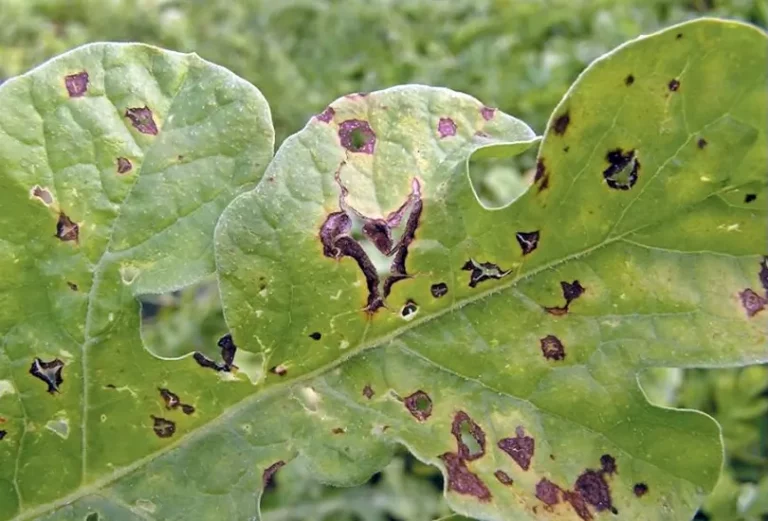

Anthracnose is a group of fungal diseases that commonly affect shade trees and ornamental plants, especially during cool, wet spring weather. It causes dark, irregular blotches on leaves, distorted growth, premature defoliation, and in some cases, twig dieback. While anthracnose is often considered a cosmetic issue in healthy trees, repeated infections can weaken a tree over time and leave it more vulnerable to pests, drought, or other diseases.
In the St. Louis area, anthracnose is especially common in sycamores, dogwoods, oaks, and maples. The fungi overwinter in fallen leaves and infected twigs, then spread in early spring when temperatures are mild and rainfall is frequent. Because the disease is driven by weather conditions, some years are worse than others—but when outbreaks occur, they can affect entire neighborhoods.
Anthracnose symptoms can vary slightly depending on the type of tree, but there are several telltale signs that suggest your tree may be infected. These symptoms often show up in early spring and may return year after year if not addressed.
Here’s what to look for:
Anthracnose is primarily spread by fungal spores that thrive in cool, wet spring weather, conditions that are all too common in St. Louis. The fungi overwinter in fallen leaves, infected twigs, and branch cankers. As temperatures warm and rainfall increases in early spring, the spores become active and are dispersed by wind, rain splash, or even pruning tools. Once airborne or carried by water, the spores land on newly emerging leaves or buds, where they quickly infect the soft, young tissue.
Because the disease relies heavily on environmental conditions, it often spreads rapidly during extended periods of damp, mild weather. Trees planted close together or in shaded areas with poor air circulation are especially vulnerable, as moisture tends to linger on their leaves. While Anthracnose does not jump from species to species, many types of trees are susceptible, and it's common to see multiple infected trees within the same neighborhood or even the same yard.
Without intervention, the fungal spores continue to cycle and re-infect the same tree year after year, slowly weakening its structure and health over time.
Anthracnose is particularly widespread in St. Louis because of the area's seasonal weather patterns, especially the cool, wet springs that help the disease take hold. Several of the region’s most common and beloved shade trees are vulnerable to infection. While the disease doesn’t typically kill mature trees on its own, repeated defoliation and branch dieback can weaken them over time, especially if they’re already stressed.
In St. Louis, the trees most frequently affected by anthracnose include:
While anthracnose can’t always be avoided, especially during cool, wet spring seasons, there are proven ways to reduce its impact and prevent it from returning year after year. The best approach combines proactive tree care, cultural practices, and professional guidance when needed.
For most healthy, mature trees, anthracnose is rarely fatal. However, repeated infections can stress a tree and make it more susceptible to other problems like pests, drought, or structural decline. The first step in treatment is to have a certified arborist confirm the diagnosis and assess the severity of the infection.
In milder cases, simply improving air circulation and cleanliness around the tree can make a big difference. This includes pruning infected branches, thinning the canopy, and removing fallen leaves and twigs, which often harbor fungal spores. Avoid overhead watering during the growing season, as excess moisture on leaves encourages fungal spread.
In cases where anthracnose is affecting high-value trees, such as ornamental dogwoods, sycamores, or oaks, preventative fungicide treatments may be recommended. These treatments are most effective when applied just as the buds begin to open in spring and may need to be repeated annually depending on weather patterns and infection history.
Ultimately, ongoing monitoring and timely intervention are the keys to managing anthracnose. With proper care, most trees can recover fully and continue to thrive.
If you’ve noticed leaf spotting, early defoliation, or branch dieback on your trees, Anthracnose may be to blame. Left untreated, it can return year after year, weakening even the strongest trees in your yard. The good news is that with early intervention and expert care, most trees can be fully protected and restored to health.
At Ballwin Tree Service, our ISA Certified Arborists know exactly what to look for and how to manage Anthracnose effectively. Whether your tree needs a professional evaluation, targeted pruning, or preventative treatment, we’re here to help. Contact us today to schedule your tree inspection and keep your trees thriving for years to come.
-min.jpg)
